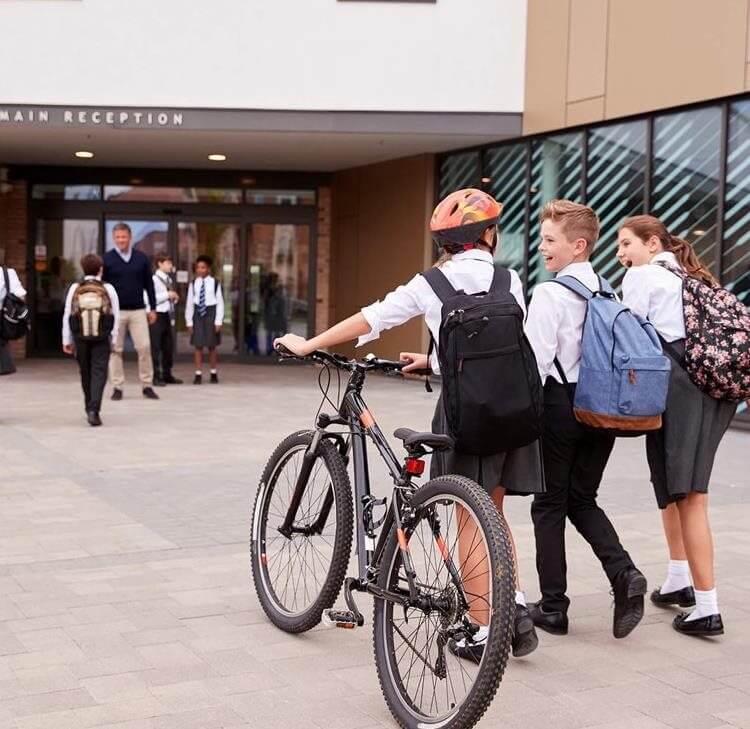Katie Michelon discusses the recent changes to the Ofsted inspection process where a school is inadequate due to safeguarding and the resulting intervention implications.
Please note that this article pre-dates changes made to the School Monitoring Handbook and School Inspection Handbook by Ofsted on 13 September 2023.
Ofsted’s updated School Inspection Handbook (in place from 1 September 2023) sets out that Ofsted will return to a school within 3 months to carry out an early monitoring inspection where the school is placed in serious weaknesses (inadequate) solely due to safeguarding.
This change to Ofsted’s inspection process is part of a wave of proposed reforms announced earlier this year, amidst criticism of the inspectorate and heightened discussion about the impact of safeguarding as a limiting judgement. (Our separate commentary on proposed reforms to Ofsted’s complaints procedure can be found here).
The impact of this inspection timing change on intervention measures which are led by the Department for Education (“DfE”) has been of interest. As many readers will be aware, an inadequate judgement from Ofsted means a directive Academy Order in the case of a maintained school and, typically, a Termination Warning Notice (“TWN”) in the case of an academy. Indeed, one angle of the criticism directed at safeguarding in isolation being capable of limiting the Leadership and Management judgement (and, in turn, the grade for Overall Effectiveness), is the severe intervention consequences.
The DfE has updated its statutory guidance on Schools Causing Concern to reflect Ofsted’s introduction of early reinspection where a school or academy has been judged to be inadequate “solely due to safeguarding”. The position under that guidance is as follows:
Maintained schools
The Schools Causing Concern guidance now states that for maintained schools, “the timeframe for the implementation of an academy order will allow for reinspection”.
We anticipate that, in practice, this means that whilst the Academy Order will still be issued to a school automatically (as per the requirements of the Academies Act 2010), the relevant regional team will not take further steps to progress conversion of the school pending the outcome of Ofsted’s early monitoring visit. Investment of both time and public resources by the school, local authority and relevant academy trust sponsor, as well as the DfE itself, would not seem sensible in those months.
If the outcome of the early monitoring inspection is that the school is regraded, with inspectors satisfied that safeguarding is now effective, the governing body of the school may apply to the Secretary of State for Education to have its Academy Order revoked, a power which is available to the Secretary of State under the Academies Act 2010.
The revocation provisions within the Schools Causing Concern guidance which support that statutory power now include a scenario where the early monitoring visit has determined that the school’s safeguarding arrangements are no longer ineffective and the school is ‘Good’ or ‘Outstanding’ overall. The guidance also adds, “To consider revocation the Secretary of State will need to be satisfied that the safeguarding concerns have been addressed and improvements can be sustained.” Each case will no doubt be judged on its merits but presumably a ‘Good’ or ‘Outstanding’ judgement will be strong evidence in support of the ability to sustain such improvements.
Academies
In the case of academies, the Schools Causing Concern guidance states “if the academy receives an improved Ofsted inspection the RD may the decide to withdraw the TWN.” Again, to consider withdrawing a TWN, the DfE expects Ofsted inspectors to have now found safeguarding to be effective and for the remaining key judgement areas to be Good or Outstanding.
It is likely that trusts will need to write to the relevant Regional Director to expressly request withdrawal of the TWN as opposed to this process happening automatically.
The Schools Causing Concern guidance is not explicit in stating that, pending an early monitoring visit, further action will be paused in relation to the TWN, but we expect that to be the case and also possibly for the TWN itself to reflect that position.
Further observations
1. Some ambiguity on grade profile
There appears to be some ambiguity, and possibly inconsistency, about the intended application of the new policy. Ofsted’s press release in June regarding the change clearly refers to further inspection within 3 months only where safeguarding is ineffective and all other judgements are “good or better”.
The Schools Causing Concern guidance also reflects this position with reference to this early inspection process only being applied by Ofsted where other key judgements are ‘Good’ or ‘Outstanding’.
However, the School Inspection Handbook itself refers only to a return visit within 3 months where “a school is placed in serious weaknesses solely due to safeguarding”.
Consider then, by way of example, a maintained school with the following grade profile:
- Leadership and management: Inadequate (due to ineffective safeguarding)
- Personal development: Requires Improvement
- Quality of Education: Good
- Behaviour and Attitudes: Good
- Overall effectiveness: Inadequate
The wording of the School Inspection Handbook would suggest that Ofsted would return for early inspection of this school within 3 months. Yet, given the RI judgement for Personal Development, Schools Causing Concern does not suggest that this would be the case. Under its terms, the school would not benefit from delay to the Academy Order implementation under the DfE’s procedures.
The School Inspection Handbook also links to Ofsted’s Monitoring Handbook but that seems even less clear on the position referring only to a monitoring visit “within 3 to 6 months” where serious safeguarding concerns have been identified.
2. Timing of early monitoring inspection
The timing of the early monitoring visit should be noted. Ofsted indicates in the School Inspection Handbook that the visit will be within 3 months of publication of the inspection report which sets out the inadequate judgement. Although the aim is for an inspection report to be published as soon as possible following an inspection visit, the reality is it can take some time, particularly where a school is graded as inadequate.
Ofsted works to publication of a graded inspection report within 30 working days of the inspection. However, if a school raises a formal complaint about the inspection (which is not an unlikely scenario where an otherwise strong school has been found to have ineffective safeguarding arrangements), under Ofsted’s current complaints procedure, publication of the report is typically delayed pending the response to that complaint. It is therefore more likely to be over 60 working days before the report is published in those cases.
In addition, Ofsted also don’t usually publish reports during school holidays, which can mean further weeks before a report goes live.
In summary, this means that Ofsted’s “early” reinspection visit could actually end up taking place many months after the original inspection, particularly where a complaint is raised. This will be something for schools to consider following a relevant inspection.
3. Further guidance on the inspection of safeguarding
As well as the changes relating to early reinspection linked to safeguarding findings, Ofsted’s package of reforms included a commitment to offer schools “greater clarity about the threshold for effective versus ineffective safeguarding”.
This forms part of the latest School Inspection Handbook with additional and amended content on what an open and positive culture around safeguarding looks like, how safeguarding culture will be evaluated and further examples of ineffective safeguarding (see paragraphs 367 – 385).
We heard concerns from numerous schools in the last academic year about how inspectors approached safeguarding. This included complaints of judgements based on inspector personal preference rather than actual requirements and an overly narrow approach to the collection of evidence. Some of the amendments to this section of the School Inspection Handbook indicate that Ofsted is committed to improving its approach here, although, given the discretion afforded to inspectors during inspection, the new provisions will need to be supported by robust and consistent inspector training and understanding for the improvements to play out in practice.
Summary
Early monitoring inspection is a positive attempt to soften the consequences of safeguarding as a limiting judgement. Previous cases have shown how quickly schools can shift from being Inadequate to Good or better and a pause to DfE intervention action during that period is also wholly sensible. We hope that schools and trusts do not have to spend a disproportionate amount of time pushing for academy order revocation and TWN withdrawal decisions where safeguarding is subsequently found to be effective and the school is regraded.
We will monitor how this change impacts our school clients in the coming months, both in terms of inspection process and intervention actions.
We do not, however, expect this policy, or indeed this package of reforms, to close the Ofsted debate triggered by the Caversham Primary case. With a new Chief Inspector on the horizon and the development of the Labour party’s “mission” as a General Election period approaches, further reform seems inevitable.










































